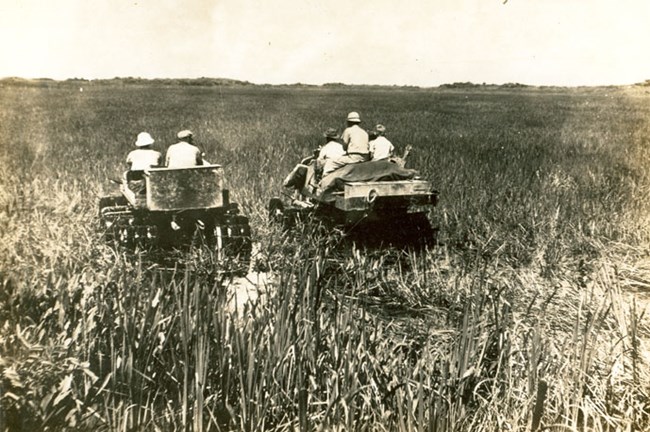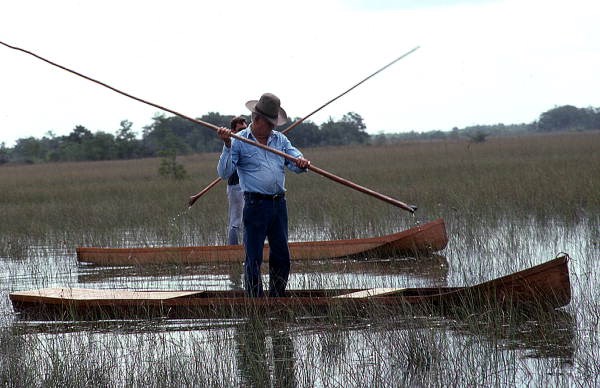
NPS (EVER 15177) GladesmenGladesmen were husbands and sons who built small homes in the Everglades. They constructed “glade skiffs,” which were small boats that could adequately navigate through the narrow canals and waterways deep in the ‘glades. The ascent of the Gladesmen into the Everglades continued alongside the development of the area. When the Ingraham highway was completed in 1916, this road gave Gladesmen an entry point into the wilderness along with researchers and tourists. The glades skiffs were about two feet wide and 16-18 feet long, to carry Gladesmen and their gear through the backcountry. The Gladesmen would stand at the back of the boat with a large pole to move through the shallow muddy waters and look out for game. Upon their return, Gladesmen would sell whatever game they managed to kill, including alligators, deer, turkey, rabbits, pigs, fish, frogs, turtles and other wildlife. 
Florida Memory Project Today, the Gladesmen culture that once thrived has had to adapt to a changing landscape. Although increased development and the designation of the Everglades as a National Park has limited the ability to survive simply off the land, the independent spirit and appreciation for the Everglades is still deeply rooted in Gladesmen culture. Anthropologist Laura A. Ogden has described “Gladesmen” Culture in this way: “The landscape of the Everglades must be understood as more than a mere backdrop to the culture of the Gladesmen. On the one hand, they were keen observers of this wilderness—spending weeks at a time walking across endless sawgrass marshes, setting camp on slightly higher hammock-covered islands, and poling flat bottomed skiffs through labyrinths of mangrove forests. As their livelihood depended upon the rich bounty of the Everglades wildlife, Gladesmen necessarily monitored the seasonal fluctuations in the region’s game. They were also able to interpret subtle signs in this landscape (such as slight depressions in the mud, the presence of certain birds, or specific odors) to track their prey." |
Last updated: August 4, 2022
